- europages
- >
- COMPANIES - SUPPLIERS - SERVICE PROVIDERS
- >
- surface treatments
Results for
Surface treatments - Import export

J.D. GECK GMBH
Germany
Use our industrial manufacturing expertise for your products too Electroplated surface finishing The maximum goods window for galvanising, chromeplating and nickelplating is L / W / D 2800x450x1000 mm. Chrome and nickel plating Galvanising (galvanising without passivation; blue galvanising with variable layer thickness and blue passivation; thicklayer passivation with nanosealing) Electrostatic powder coating Maximum load per hook 30 kg workpieces up to 60 kg Maximum workpiece size L / W / H = 3000/800 /1700 mm More information available at https//www.geck.de
Request for a quote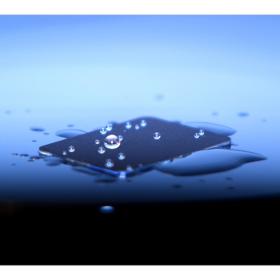
AAAGILER GMBH
Germany
Surface treatment with laser with a broad spectrum of applications (improved thermal conductivity, anti-icing / freezing, anti-friction, anti-wear, lubrication, anti-microbial, reduced electrical resistance e.g. for connectors, holograms, product protection, logos, wettability, increase surface area by up to 280% ...). Can be used for metal (steel, aluminum, titanium) polymers / plastics (e.g. polycarbonate), composite material and ceramics
Request for a quote
AAAGILER GMBH
Germany
Surface treatment with laser with a broad spectrum of applications (improved thermal conductivity, anti-icing / freezing, anti-friction, anti-wear, lubrication, anti-microbial, reduced electrical resistance e.g. for connectors, holograms, product protection, logos, wettability, increase surface area by up to 280% ...). Can be used for metal (steel, aluminum, titanium) polymers / plastics (e.g. polycarbonate), composite material and ceramics
Request for a quote
DR. PAUL LOHMANN GMBH & CO. KGAA
Germany
Dr. Paul Lohmann® offers Ammonium Acetate as crystalline powder in chem. pure. For biopharmaceutical applications it is used as pH buffer in purification processes. For industrial applications, it is used as a pH buffer, conductivity improver and complexing agent in electrochemical processes and metal salt solutions. CAS 631-61-8 EINECS 211-162-9 Dr. Paul Lohmann® carries out product and application development in close cooperation with customers. This includes the adaptation of chemical and physical parameters such as bulk density, wettability, particle size, purity or pH-value.
Request for a quote
IDG-DICHTUNGSTECHNIK GMBH
Germany
Suitable aftertreatments can render precision O‑rings and X‑rings suitable for specific requirements. Typical requirements are low friction, easier installation (automatic or manual), lifelong lubrication, smooth running and non stick effect. Coating is a process frequently used for surface treatment. The IDG application consultants are available to discuss specific requirements with you.
Request for a quote
SIM AUTOMATION GMBH
Germany
Entire system solution from a single source: — from construction of the laser cell to integration of your chosen KEYENCE laser — self-contained and high-performance solutions for laser labeling small batches of individual parts Additional possibilities with the SIM-Marker Plus: — Focal point height adjustable within a range of 42 mm (±21 mm) — Autofocus with 3-axis laser control (simultaneous control of the X, Y and Z axes of the laser optics) — Distortion-free marking of 3D objects such as bevels, cylinders, spheres and cones — Set up: directly on a desk or mounted onto the movable base frame — Latest three-axis laser marking systems offers a laser labeling system that can be precisely adjusted to the materials and part geometries that shall be labeled Advantages of integrated optical three-axis technology: — focal point to be freely set and is especially impressive Size of the labeling field: between 120 x 120 mm and 330 x 330 mm.
Request for a quote
SIM AUTOMATION GMBH
Germany
Entire system solution from a single source: — from construction of the laser cell to integration of your chosen KEYENCE laser — self-contained and high-performance solutions for laser labeling small batches of individual parts SIM-Marker Mini Equipment options: Standard version — Manual setting of the focal point with mechanical lift table — Door opening by hand — Connection to PC via LAN or USB — Set up: directly on a desk or mounted onto the movable base frame — Latest three-axis laser marking systems offers a laser labeling system that can be precisely adjusted to the materials and part geometries that shall be labeled Advantages of integrated optical three-axis technology: — focal point to be freely set and is especially impressive — mark on any shape with outstanding sharpness, including on slanted surfaces, cylinders and cones Size of the labeling field: between 120 x 120 mm and 330 x 330 mm.
Request for a quote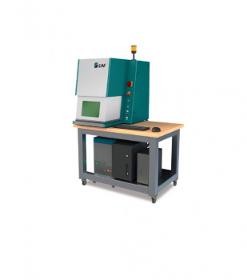
SIM AUTOMATION GMBH
Germany
Entire system solution from a single source: — from construction of the laser cell to integration of your chosen KEYENCE laser — self-contained and high-performance solutions for laser labeling small batches of individual parts Characteristics SIM-Marker Compact: — mechanical Z-axis, manual adjustment of the focal point with adjusting wheel — Opening and closing of lift door with operating button (electrical) — Lift door opening time < 2.0 sec. — PC-Link — Set up: directly on a desk or mounted onto the movable base frame — Latest three-axis laser marking systems offers a laser labeling system that can be precisely adjusted to the materials and part geometries that shall be labeled Advantages of integrated optical three-axis technology: — focal point to be freely set and is especially impressive — mark on any shape with outstanding sharpness, including on slanted surfaces, cylinders and cones Size of the labeling field: between 120 x 120 mm and 330 x 330 mm.
Request for a quote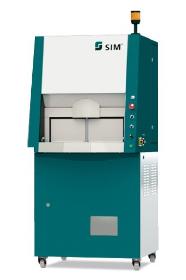
SIM AUTOMATION GMBH
Germany
Entire system solution from a single source: — from construction of the laser cell to integration of your chosen KEYENCE laser — self-contained and high-performance solutions for laser labeling small batches of individual parts SIM Marker Rotary equipment options: — electrical adjustment of the focal point — Side door, double-bit lock — Connection to PC via LAN or USB Customized — integrated suction (automatic activation when writing) — PC or Notebook with side table — Set up: directly on a desk or mounted onto the movable base frame — Latest three-axis laser marking systems offers a laser labeling system that can be precisely adjusted to the materials and part geometries that shall be labeled Advantages of integrated optical three-axis technology: — focal point to be freely set and is especially impressive Size of the labeling field: between 120 x 120 mm and 330 x 330 mm.
Request for a quote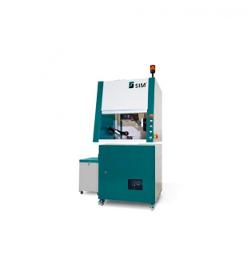
SIM AUTOMATION GMBH
Germany
Entire system solution from a single source: — from construction of the laser cell to integration of your chosen KEYENCE laser — self-contained and high-performance solutions for laser labeling small batches of individual parts Equipment variants SIM-Marker Classic: Basic — mechanical Z-axis, manual adjustment of the focal point with adjusting wheel — manual opening and closing of the lift door by hand, after safety release Advanced — electric Z-axis, adjustment of the focal point with operating button — Opening and closing of the lift door with operating button — Set up: directly on a desk or mounted onto the movable base frame Advantages of integrated optical three-axis technology: — focal point to be freely set and is especially impressive — mark on any shape with outstanding sharpness, including on slanted surfaces, cylinders and cones Size of the labeling field: between 120 x 120 mm and 330 x 330 mm.
Request for a quote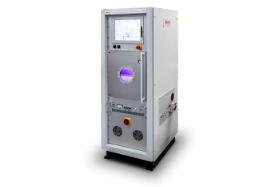
DIENER ELECTRONIC GMBH & CO. KG
Germany
Plasma systems from Diener electronic have long since established themselves in a wide range of industrial sectors. With the Tetra 100 low-pressure plasma system, you can rely on modern and future-proof cold plasma technology in a vacuum. The chamber volume of approx. 100 litres of this plasma system offers enough space to serve series production / automation. Low pressure plasma treatment is a proven technique for controlled ultra-fine cleaning, adhesion enhancement (activation and etching) and coating of thin films on substrate surfaces. Plasma is generated by applying high-frequency voltage in the vacuum chamber. In the process, the process gas introduced there is ionised. Fields of application: VOC-free cleaning of organic residues Activation before painting, gluing, potting, ... Etching of PTFE, photoresist, oxide layers, ... Super-hydrophobic and -hydrophilic coatings
Request for a quote
DIENER ELECTRONIC GMBH & CO. KG
Germany
Plasma systems from Diener electronic have long since established themselves in a wide variety of industrial sectors. With the PlasmaBeam PC atmospheric pressure plasma system, you can rely on modern and future-proof plasma jet technology under atmospheric pressure. Due to the treatment width of 8 - 10 mm, substrates can be precisely treated locally. PlasmaBeam technology can be used for inline processes. With the help of robots, 2 or 3-dimensional surfaces can be treated. PlasmaBeam enables local surface cleaning without masking the rest of the surface. For example, cleaning before wire bonding and various processes in the electronics industry. Furthermore, the PlasmaBeam PC is suitable as a pre-treatment device for the following processes: Gluing, bonding, printing, laminating, soldering, welding, flocking. The following surfaces can be treated with PlasmaBeam: Plastics, rubber, metal, glass, ceramics, hybrid materials.
Request for a quote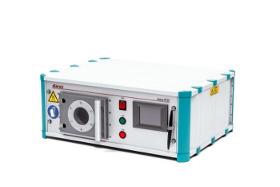
DIENER ELECTRONIC GMBH & CO. KG
Germany
Plasma systems from Diener electronic have long since established themselves in a wide range of industrial sectors. With the Femto low-pressure plasma system, you can rely on modern and future-proof cold plasma technology in a vacuum. The chamber volume of 2 to 3 litres of this plasma system offers enough space to serve laboratory and small series production. Low pressure plasma treatment is a proven technique for controlled ultra-fine cleaning, adhesion enhancement (activation and etching) and coating of thin films on substrate surfaces. Plasma is generated by applying high-frequency voltage in the vacuum chamber. In the process, the process gas introduced there is ionised. Fields of application: VOC-free cleaning of organic residues Activation before painting, gluing, potting, ... Etching of PTFE, photoresist, oxide layers, ... Super-hydrophobic and -hydrophilic coatings
Request for a quote
DIENER ELECTRONIC GMBH & CO. KG
Germany
Plasma systems from Diener electronic have long since established themselves in a wide range of industrial sectors. With the Tetra 2800 low-pressure plasma system, you can rely on modern and future-proof cold plasma technology in a vacuum. The chamber volume of approx. 2800 litres of this plasma system offers enough space to serve series production. Low pressure plasma treatment is a proven technique for controlled ultra-fine cleaning, adhesion enhancement (activation and etching) and coating of thin films on substrate surfaces. Plasma is generated by applying high-frequency voltage in the vacuum chamber. In the process, the process gas introduced there is ionised. Fields of application: VOC-free cleaning of organic residues Activation before painting, gluing, potting, ... Etching of PTFE, photoresist, oxide layers, ... Super-hydrophobic and -hydrophilic coatings
Request for a quote
DIENER ELECTRONIC GMBH & CO. KG
Germany
Plasma systems from Diener electronic have long since established themselves in a wide variety of industrial sectors. With the PlasmaBeam QUATTRO atmospheric pressure plasma system, you can rely on modern and future-proof plasma jet technology under atmospheric pressure. Due to the treatment width of 8 - 10 mm, substrates can be precisely treated locally. PlasmaBeam technology can be used for inline processes. With the help of robots, 2 or 3-dimensional surfaces can be treated. PlasmaBeam enables local surface cleaning without masking the rest of the surface. For example, cleaning before wire bonding and various processes in the electronics industry. Furthermore, the PlasmaBeam QUATTRO is suitable as a pre-treatment device for the following processes: Gluing, bonding, printing, laminating, soldering, welding, flocking. The following surfaces can be treated with PlasmaBeam: Plastics, rubber, metal, glass, ceramics, hybrid materials.
Request for a quote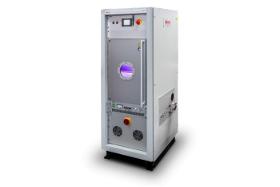
DIENER ELECTRONIC GMBH & CO. KG
Germany
Plasma systems from Diener electronic have long since established themselves in a wide range of industrial sectors. With the Tetra 150 low-pressure plasma system, you can rely on modern and future-proof cold plasma technology in a vacuum. The chamber volume of approx. 150 litres of this plasma system offers enough space to serve series production / automation. Low pressure plasma treatment is a proven technique for controlled ultra-fine cleaning, adhesion enhancement (activation and etching) and coating of thin films on substrate surfaces. Plasma is generated by applying high-frequency voltage in the vacuum chamber. In the process, the process gas introduced there is ionised. Fields of application: VOC-free cleaning of organic residues Activation before painting, gluing, potting, ... Etching of PTFE, photoresist, oxide layers, ... Super-hydrophobic and -hydrophilic coatings
Request for a quote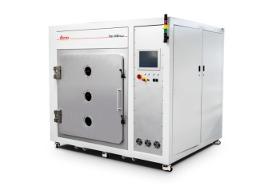
DIENER ELECTRONIC GMBH & CO. KG
Germany
Plasma systems from Diener electronic have long since established themselves in a wide range of industrial sectors. With the Tetra 1440 low-pressure plasma system, you can rely on modern and future-proof cold plasma technology in a vacuum. The chamber volume of approx. 1440 litres of this plasma system offers enough space to serve series production. Low pressure plasma treatment is a proven technique for controlled ultra-fine cleaning, adhesion enhancement (activation and etching) and coating of thin films on substrate surfaces. Plasma is generated by applying high-frequency voltage in the vacuum chamber. In the process, the process gas introduced there is ionised. Fields of application: VOC-free cleaning of organic residues Activation before painting, gluing, potting, ... Etching of PTFE, photoresist, oxide layers, ... Super-hydrophobic and -hydrophilic coatings
Request for a quoteDo you sell or make similar products?
Sign up to europages and have your products listed

DIENER ELECTRONIC GMBH & CO. KG
Germany
Plasma systems from Diener electronic have long since established themselves in a wide variety of industrial sectors. With the PlasmaBeam DUO atmospheric pressure plasma system, you can rely on modern and future-proof plasma jet technology under atmospheric pressure. Due to the treatment width of 8 - 10 mm, substrates can be precisely treated locally. PlasmaBeam technology can be used for inline processes. With the help of robots, 2 or 3-dimensional surfaces can be treated. PlasmaBeam enables local surface cleaning without masking the rest of the surface. For example, cleaning before wire bonding and various processes in the electronics industry. Furthermore, the PlasmaBeam is suitable as a pre-treatment device for the following processes: Gluing, bonding, printing, laminating, soldering, welding, flocking. The following surfaces can be treated with PlasmaBeam: Plastics, rubber, metal, glass, ceramics, hybrid materials.
Request for a quote
DIENER ELECTRONIC GMBH & CO. KG
Germany
A cost-effective process for activating plastic and elastomer surfaces is treatment with the APC500. Using air as the process gas, large surfaces can be activated under atmospheric pressure. An arc is ignited between two electrodes in an inhomogeneous field. The voltage is about 10,000 V. In the discharge zone, the air flowing through is ionised. The plasma is blown out of the electrode area by the air flow. The substrate can now be treated in the emerging corona. A strip several centimetres wide is treated in the corona. With several parallel plasma generators it is possible to treat surfaces. Due to dangerous voltage potential, PlasmaAPC 500 is only suitable for non-conductive materials. PlasmaAPC 500 is suitable as a pre-treatment unit for the following processes: Bonding, printing, painting. The following surfaces can be treated with PlasmaAPC 500: Plastics, rubber, ceramics, glass.
Request for a quote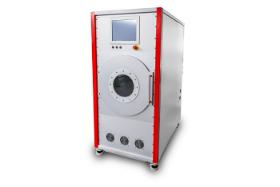
DIENER ELECTRONIC GMBH & CO. KG
Germany
Plasma systems from Diener electronic have long since established themselves in a wide range of industrial sectors. With the Tretra 320R low-pressure plasma system, you can rely on modern and future-proof cold plasma technology in a vacuum. The chamber volume of approx. 320 litres of this plasma system offers enough space to serve series production / automation. Low pressure plasma treatment is a proven technique for controlled ultra-fine cleaning, adhesion enhancement (activation and etching) and coating of thin films on substrate surfaces. Plasma is generated by applying high-frequency voltage in the vacuum chamber. In the process, the process gas introduced there is ionised. Fields of application: VOC-free cleaning of organic residues Activation before painting, gluing, potting, ... Etching of PTFE, photoresist, oxide layers, ... Super-hydrophobic and -hydrophilic coatings
Request for a quote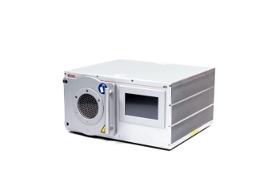
DIENER ELECTRONIC GMBH & CO. KG
Germany
Plasma systems from Diener electronic have long since established themselves in a wide range of industrial sectors. With the Atto low-pressure plasma system, you can rely on modern and future-proof cold plasma technology in a vacuum. The chamber volume of approx. 10.5 litres of this plasma system offers enough space to serve laboratory and also small series production. Low pressure plasma treatment is a proven technique for controlled ultra-fine cleaning, adhesion enhancement (activation and etching) and coating of thin films on substrate surfaces. Plasma is generated by applying high-frequency voltage in the vacuum chamber. In the process, the process gas introduced there is ionised. Fields of application: VOC-free cleaning of organic residues Activation before painting, gluing, potting, ...
Request for a quote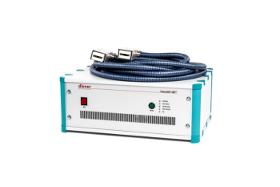
DIENER ELECTRONIC GMBH & CO. KG
Germany
A cost-effective process for activating plastic and elastomer surfaces is treatment with the PlasmaAPC 500 DUO. Using air as the process gas, large surfaces can be activated under atmospheric pressure. An arc is ignited between two electrodes in an inhomogeneous field. The voltage is about 10,000 V. In the discharge zone, the air flowing through is ionised. The plasma is blown out of the electrode area by the air flow. The substrate can now be treated in the emerging corona. A strip several centimetres wide is treated in the corona. With several parallel plasma generators it is possible to treat surfaces. Due to dangerous voltage potential, PlasmaAPC 500 DUO is only suitable for non-conductive materials. PlasmaAPC 500 DUO is suitable as a pre-treatment unit for the following processes: Bonding, printing, painting. The following surfaces can be treated with PlasmaAPC 500 DUO: Plastics, rubber, ceramics, glass.
Request for a quote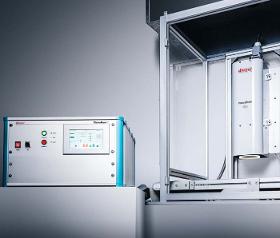
DIENER ELECTRONIC GMBH & CO. KG
Germany
Plasma systems from Diener electronic have long since established themselves in a wide variety of industrial sectors. With the atmospheric pressure plasma system PlasmaBeam RT, you can rely on modern and future-proof plasma jet technology under atmospheric pressure. Due to the treatment width of 120 mm, substrates can be treated locally with precision. With our new product, the PlasmaBeam RT, there is now the perfect solution for fast, efficient and wide in-line plasma treatment of 2D surfaces. The RT can be perfectly integrated into existing production lines and thus enables the automated cleaning and activation of various components and web-shaped materials. We create the possibility of up to 120 mm wide plasma treatment, with the usual consistent quality and effectiveness of atmospheric pressure plasma systems from Diener electronic.
Request for a quote
DIENER ELECTRONIC GMBH & CO. KG
Germany
Plasma systems from Diener electronic have long since established themselves in a wide range of industrial sectors. With the Tetra 30 low-pressure plasma system, you can rely on modern and future-proof cold plasma technology in a vacuum. The chamber volume of 34 up to 50 litres of this plasma system offers enough space to serve series production / automation. Low pressure plasma treatment is a proven technique for controlled ultra-fine cleaning, adhesion enhancement (activation and etching) and coating of thin films on substrate surfaces. Plasma is generated by applying high-frequency voltage in the vacuum chamber. In the process, the process gas introduced there is ionised. Fields of application: VOC-free cleaning of organic residues Activation before painting, gluing, potting, ... Etching of PTFE, photoresist, oxide layers, ... Super-hydrophobic and -hydrophilic coatings
Request for a quote
DIENER ELECTRONIC GMBH & CO. KG
Germany
A prerequisite for the adhesion of an adhesive or coating to a surface is wetting. For wetting to take place, the surface energy of the substrate must be greater than that of the coating. In particular, very many plastics have a very small surface energy and are correspondingly difficult to bond. Often the aim of a plasma treatment is to make a surface wettable and bondable. The wettability can easily be tested with test inks. Diener electronic supplies a test ink set with 8 liquids with surface tensions between 30 and 73 (105) mN/m suitable for most practical applications. There is also a set of 23 test inks, with additional gradations between 30 and 73 (105) mN/m.
Request for a quote
DIENER ELECTRONIC GMBH & CO. KG
Germany
Plasma systems from Diener electronic have long since established themselves in a wide range of industrial sectors. With the Nano low-pressure plasma system, you can rely on modern and future-proof cold plasma technology in a vacuum. The chamber volume of 18 up to 24 litres of this plasma system offers enough space to serve laboratory and also series production. Plasma treatment in low-pressure plasma is a proven technique for controlled ultra-fine cleaning, improvement of adhesion (activation and etching) and coating of thin layers on substrate surfaces. Plasma is generated by applying high-frequency voltage in the vacuum chamber. In the process, the process gas introduced there is ionised. Fields of application: VOC-free cleaning of organic residues. Activation before painting, gluing, potting, ... Etching of PTFE, photoresist, oxide layers, ... Super-hydrophobic and -hydrophilic coatings
Request for a quote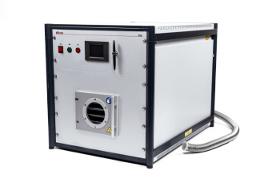
DIENER ELECTRONIC GMBH & CO. KG
Germany
Plasma systems from Diener electronic have long since established themselves in a wide range of industrial sectors. With the Pico low-pressure plasma system, you can rely on modern and future-proof cold plasma technology in a vacuum. The chamber volume of 5 up to 8 litres of this plasma system offers enough space to serve laboratory and also series production. Low pressure plasma treatment is a proven technique for controlled ultra-fine cleaning, adhesion enhancement (activation and etching) and coating of thin films on substrate surfaces. Plasma is generated by applying high-frequency voltage in the vacuum chamber. In the process, the process gas introduced there is ionised. Fields of application: VOC-free cleaning of organic residues Activation before painting, gluing, potting, ... Etching of PTFE, photoresist, oxide layers, ... Super-hydrophobic and -hydrophilic coatings
Request for a quote
DIENER ELECTRONIC GMBH & CO. KG
Germany
Plasma systems from Diener electronic have long since established themselves in a wide variety of industrial sectors. With the atmospheric pressure plasma system PlasmaBeam Mini, you can rely on modern and future-proof plasma jet technology under atmospheric pressure. Due to the treatment width of 3 - 5 mm, substrates can be treated locally with precision. In contrast to the Plasmabeam devices, the PlasmaBeam Mini is designed for laboratory use. The PlasmaBeam technology enables local surface cleaning without masking the rest of the surface. For example, cleaning before wire bonding and various processes in the electronics industry. Furthermore, the PlasmaBeam is suitable as a pre-treatment device for the following processes: Gluing, bonding, printing, laminating, soldering, welding, flocking. The following surfaces can be treated with PlasmaBeam: Plastics, rubber, metal, glass, ceramics, hybrid materials.
Request for a quote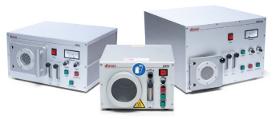
DIENER ELECTRONIC GMBH & CO. KG
Germany
Plasma systems from Diener electronic have long since established themselves in a wide range of industrial sectors. With the Zepto low-pressure plasma system, you can rely on modern and future-proof cold plasma technology in a vacuum. The chamber volume of approx. 1 - 4 litres of this plasma system offers enough space to serve laboratory and small series production. Low pressure plasma treatment is a proven technique for controlled ultra-fine cleaning, adhesion enhancement (activation and etching) and coating of thin films on substrate surfaces. Plasma is generated by applying high-frequency voltage in the vacuum chamber. In the process, the process gas introduced there is ionised. Fields of application: VOC-free cleaning of organic residues Activation before painting, gluing, potting, ...
Request for a quoteResults for
Surface treatments - Import exportNumber of results
80 ProductsCountries
- Germany (80)
- Berlin and region (2)
- Bonn, Düsseldorf and North Rhine and Westphalia (19)
- Frankfurt am Main and Hesse (3)
- Hamburg and region (7)
- Hannover and Lower Saxony (2)
- Kiel and Schleswig-Holstein (1)
- Magdeburg and Saxony-Anhalt (1)
- Mainz and Rheinland-Pfalz (1)
- Munich, Nuremberg and Bavaria (2)
- Stuttgart, Freiburg and Baden-Wurtemberg (30)
- Weimar and Thuringia (12)
Company type
Category
- Surface treatment - machinery and equipment (30)
- Steels and metals - surface treatment and coating (10)
- Automation - systems and equipment (5)
- Machinery and equipment, used and reconditioned (5)
- Mechanical surface treatment - machinery (4)
- Industrial sprayers for surface treatment (3)
- Laser printing (2)
- Sandblasting equipment (2)
- Cleaning and maintenance - equipment and supplies (1)
- Alarms - security devices (1)
- Automobiles (1)
- Casting, steel (1)
- Chemistry, inorganic - raw materials and derivatives (1)
- Construction - Machines & Equipment (1)
- Couplings, mechanical (1)
- Fibre-cement - products (1)
- Grinding - steels and metals (1)
- High-pressure cleaning machines (1)
- Internal transport systems (1)
- Oils and resinoids (1)